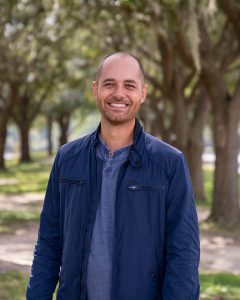
by David Docusen | February 5, 2020 | Uncategorized
Carissa arrived at Cafe Grumpy just off of Wall Street with a double shot of energy. She immediately hugged my daughter (whom she had just met) and talked about how she could one day move to New York City, as well. “Mary, you will love it here,” she said as if the wheels were already in motion for my fourteen year old girl to move to the Big Apple.
Carissa and I met when she was speaking at the CCDA Conference in Detroit a few years ago. Her passion was infectious and I was captivated by her passion for business and justice. I stuck around for a few minutes after the presentation to say hello. We’ve partnered together on a few initiatives since that day. The common thread for all of our collaborative efforts center around our shared interest in entrepreneurialism and equal opportunities for individuals in high poverty communities.
———————————-
“I use this side of my journal to keep my mind busy while I’m in meetings,” she said with a huge smile on her face. She was pointing to the first half of her simple black notebook. There were squiggles, scribbles, and abstract shapes all over the first twenty pages of the notebook. “I know people think I’m crazy. I probably am a little bit, but aren’t we all?” She was laughing out loud at this point.
“Whenever I say that I’m going to do something, I turn to the back of the notebook.” She flipped to the last twenty pages of the same black notebook and it was filled with perfectly tidy checklists. “This notebook helps separate my creative energy from the productive side of my brain,” she said.
We met to discuss a book she’s writing. The next ninety minutes turned out to be a creative explosion.
She filled two pages of abstract shapes interspersed with notes from our conversation. At the conclusion of our time together, she turned to the back half of her notebook and we discussed some practical ideas to get her project going in the next few weeks.
I can’t give away the main themes of her book, but she’s exploring the characteristics of a holistic business person. This includes planning for growth while creating opportunities for others that may be overlooked or marginalized. Her conviction was palpable as she said, “Talent is equal, opportunity is not.”
I can’t wait to read her book.
———————————-
The future will be created by entrepreneurs like Carissa. She has a vision for business leaders that are full of grace and benevolent hearts. I am grateful that my daughter was able to meet her today. I want to expose Mary to women that have big dreams. Mary will take on the world one day and it is my job to make sure she’s ready when that time comes.
Mary led the charge the entire weekend. I taught her how to read the subway maps and how to buy our Metro cards. She used Citymapper to navigate subway lines, Apple Maps to get walking directions, and Grabbd to find the most delicious vegan restaurants and unique coffee shops. This was her weekend to explore the city and I was right next to her every time she had a question. She didn’t have many questions.
Most impressively, Mary skillfully snagged a picture in Times Square of three Elmos surrounding another Elmo as Cookie Monster casually watched from a distance. These notoriously creepy mascots demand payment for pictures. Not from my girl, though. She kept her distance and discreetly executed the “snap and proceed with no charge” technique. She was born to adventure and this weekend was her time to shine. Her brilliance illuminated the city.
———————————-
There are no glass ceilings for Mary to shatter in the Docusen home because we are building the house. There’s no limit to what she can do and what she can become. Dara and I are raising our sweet girl to be fiercely committed to carrying out all that God has placed in her heart.
Women are filling executive positions and seats on boards.
Women are crashing the boys’ club in the corporate world.
Women are courageously and prophetically leading us in ministry.
I hope you’re ready. Mary is ready. Carissa is ready.
I see a wave of young leaders rising up. There are no limits to what a person can do when they have been called and anointed by God. Discriminatory lines cannot and will not hold back brilliance. When I look into Mary’s eyes, I don’t see a potential future leader. I see a present leader that is simply learning how to navigate the subway system and find the best restaurants along the way.
I will forever raise my voice to advocate for women in positions of leadership in churches, nonprofit orgs, and businesses. Carissa and Mary only deepened my belief that women are equipped and ready to take the lead.
Fellas, I hope you’re ready. The future is here and she is courageous.
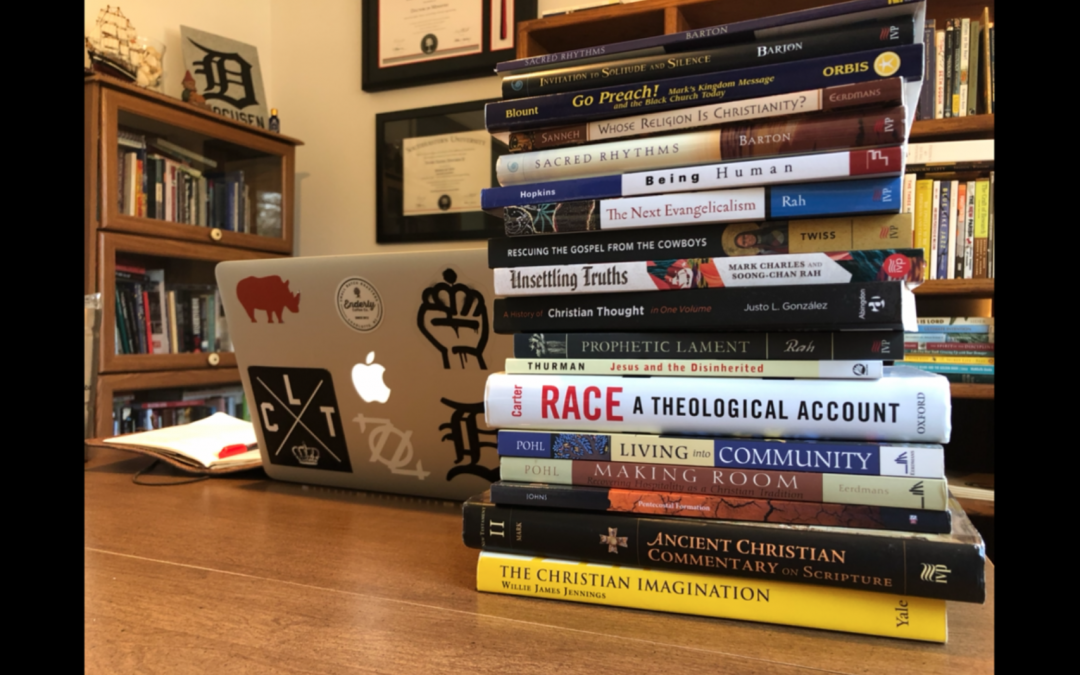
by David Docusen | January 30, 2020 | Uncategorized
Pastor –
Thanks for reaching out the other day regarding advice about your plans for Black History Month (February). Simply being willing to reach out and be intentional shows that you’re starting to see that it’s important to think outside the box that we were raised in and highlight times of the year that are significant to people of color in our country.
I’m certainly not an expert in navigating the complex dynamics that have divided our culture, but I deeply care and have some thoughts on how you can create an environment at your church to recognize the significance of this month and why it’s so important to folks in your church.
Remember… you teach on what is or has impacted you. Use that same instinct to share what has impacted you to share about topics of race. However, that means that you’re going to have to take the time to be impacted. Listen, learn, grow, and start sharing in the same way you do about everything else.
Here we go…
1. IT’S OK TO BE INTENTIONAL
You’re not the only white pastor that is nervous that you’ll come off as disingenuous if you mention something on a Sunday morning. The angst that you feel will start to go away as you incorporate more and more diversity into your teaching, positions of influence in your church, and regular references to people of color as people you admire, study, and are impacting your learning. For the time being, though, you’ve got to start somewhere, and it’s ok to be intentional this month.
Read up on why Black History Month is so significant in our country and share what you’re learning with your church. You probably got to the point that you did because you’re creative and found ways to communicate complex things in an interesting way. Don’t be nervous… just learn like you always do about other topics and let the ideas naturally flow.
It will feel more natural the more you know, the more you care, and the more you are genuinely impacted by a diverse theological and relational reality in your life. It’s ok to start somewhere, even if some people are skeptical. The alternative is to continue to be fearful and never mention significant non-white holidays.
Check out this link… did you know there’s specific months during the year that represent Black, Native American, Asian-American, Hispanic, etc? Your heart for diversity will shine through (and be way more believable) if you regularly acknowledge that there’s a rich history of diversity in our country and in the communities surrounding your church.
Remember, the spirit of neighborliness is not a black or white thing… it’s just opening up your heart to understand and find friendship with folks that are different from you. We all have so much to learn.
PRACTICAL TIP: Please don’t use the phrase, “God is color blind and so are we.”
The master plan of God included the brilliance and beauty of different skin tones and you don’t need to dismiss that in an effort to say that you love and embrace people of color. I know what you’re trying to say and I think you’re not saying what you mean to say when you say that phrase.
2. WHO ARE YOU READING / QUOTING IN YOUR SERMONS?
Take a look at your library. How many theologians, bible scholars, and influential voices in your life are people of color or women? As Willie Jennings would say (paraphrased), our imaginations are shaped by who we are reading and listening to as we develop our theological imagination.
This is one of the quickest and easiest ways to start shifting your heart, mind, spirit, and public expression of neighborliness as you lead your church: start quoting people of color and women as the experts on the topics you’re talking about.
Generally speaking, the quotes you’re using aren’t the points in your message. They support the points in your message. That means that you can use a wide variety of sources to make the same point. Most of the quotes I’ve seen from pastors come from old or dead white dudes. Why not dig a little deeper and find the brilliance that is available from a different perspective?
A quick look at my library includes theologians and Bible scholars like Soong Chan Rah,
Cheryl Bridges-Johns, Brian K. Blount, James Cone, Howard Thurman, J. Kameron Carter,
Christine Pohl, Justo Gonzalez, Amos Yong, Dwight Hopkins, Mark Charles,
Delores Williams, Richard Twiss, etc.
I’m not saying to ignore the brilliant voices of white guys that have deeply impacting work, I’m just saying that we’ve heard from them a bunch and that your teaching will be more well-rounded if you’re not homogenous in your thought and expression of our beautiful faith.
PRACTICAL TIP: Show pictures of every person you quote.
It helps the visual learners in the room (like me) to see a human being next to a quote. Additionally, you never have to use a modifier like “one of my favorite women theologians is…”
You don’t have to even acknowledge that they are a person of color or a woman, but people will begin to see it for themselves and will appreciate the diversity of thought that is impacting your pursuit and understanding of God.
Our christian imaginations have been shaped in churches by a deluge of white voices… dig deeper and give your congregation a better representation of the beauty of God.
3. WHO IS ON YOUR STAGE AND IN POSITIONS OF INFLUENCE?
What is the racial and gender makeup of your executive leadership team, board of directors, primary communicators on Sunday morning, and decision makers at your church? If it’s all white I would propose that you then take stock of the relationships that fill your life.
Who sits in your living room and laughs with you?
Who comes over for dinner and lingers for hours?
Who are you listening to when you ask for feedback about the church?
Who do you have coffee with and simply hang with and enjoy?
How many of these people are people of color?
Most pastors that I know hire brilliant people that are connected to their relational circle. It wouldn’t be too far of a reach to say that pastors are “hiring the best people they know.” However, if your relational circles look like you, your leadership teams and influencers in your church will likely look mostly like you, as well.
Simply put, the best way that you can figure out what to do for Black History month (or any of the other non-white holidays or months of recognition) is to ask your non-white friends what would be meaningful to them to honor their own culture.
PRACTICAL TIP: Ask someone not like you to grab coffee or a meal and genuinely ask them what it’s like to be a person of color at your church. Just listen, learn, and grow. Don’t say too much… just let your friend talk and hear from their perspective.
———————————–
Ever notice we don’t have a white history month?
This is probably because our history has been written by white people with white experiences and white imaginations. These months of recognition are important to acknowledge in our churches because it reminds us that our churches can and should reflect the beauty of diversity that is found in our communities.
I know it’s not easy to engage in conversations about race in the church. I know you’ve tried before and people got mad or offended. I have been there and can uniquely relate to feeling like your intentions were pure and you still get negative feedback. I also can imagine that you’re nervous. That’s normal, but it’s not a reason to shy away from these topics.
Keep pressing forward. It’s worth it to keep pressing forward. There are people of color in your church that will be deeply impacted by your willingness to stretch yourself and expand your circles of who is influencing you and friendships that impact your life.
Finally, most of the pictures that I see in the bible regarding the New Jerusalem and the heavenly city include beautiful imagery of a diverse community of worshipers from every nation and every tongue.
If that is the reality we will enjoy in heaven, why not intentionally work toward
experiencing that beautiful reality here on earth?
I’m proud of you. I’m here for you. And I’m grateful you cared enough to reach out this week. Hit me back if you have any more questions. I may not have the answers, but I’m always willing to talk and explore further.
Your friend,
David
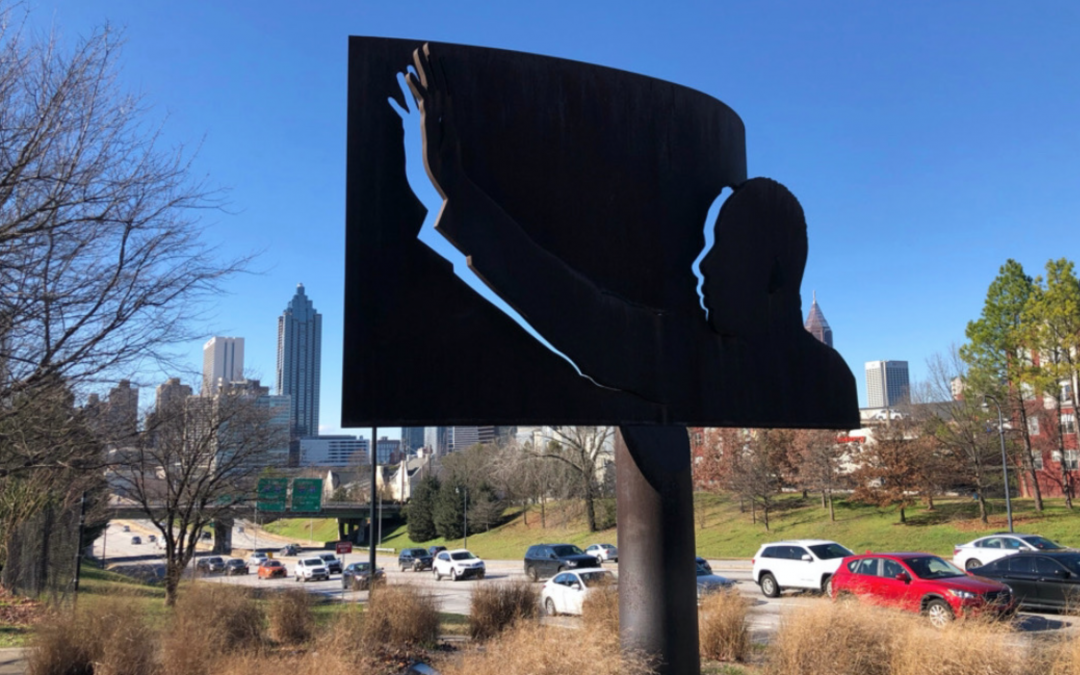
by David Docusen | January 21, 2020 | Uncategorized
I have to preface this post with an admission. I had the privilege of being the lead pastor at Center City Church for ten years and during that time, we recognized Dr. Martin Luther King, Jr. weekend four times. That’s six years that I never intentionally honored Dr. King or the many folks that came before and after him that have fought for justice in our country.
Here’s some back story…
I cut my teeth in ministry at a predominantly white megachurch in Orlando, FL. If we recognized MLK Jr. each January, I have to admit that I don’t remember it being a momentous occasion. Prior to that, I grew up in a predominantly white church just north of Orlando in Longwood, FL. Going back even further, I was born and raised until late elementary school in a predominantly white church just west of Detroit, MI.
The first six years of our ministry in Charlotte including me leading Center City Church in the way that I was raised. I didn’t understand the need to pause and properly honor Dr. King and so many others that have been fighting for base-level matters of economic and social equity. Furthermore, I didn’t notice because I didn’t have to notice. I was firmly in the middle class, never had a fleeting concern about unfair policing, and could always see a path between where I was and where I wanted to go in my life.
My understanding of the Civil Rights movement was shaped by reading a unit of a textbook in the fifth grade and the time when Mrs. Miller showed our (predominantly white) class a video of Dr. King’s I Have a Dream speech. I have some fuzzy memories of learning about the heroism of Harriett Tubman and Rosa Parks in high school, as well.
All that being said, I also have to admit that I simply didn’t care enough to dig any further than the surface. I know that might sound harsh, but I know it’s true. Teenage me could feel the ways black and brown students at Lake Brantley High School were treated differently and with less respect than the white students. I heard the jokes, but I put myself at ease knowing I wasn’t the one making the jokes (most of the time) about kids that weren’t like us.
In hindsight, my silence spoke louder than I realized. My circle of friends didn’t include people of color because my entire worldview from birth was white, middle class, and blind to the societal realities of my fellow classmates.
———————————————————————
It should come as no surprise, then, that honoring the life and legacy of Dr. King wasn’t on my radar when I began pastoring Center City Church.
Fast forward to the summer of 2015. Center City Church had grown to around 200 people and it was the most beautiful sense of community I had ever experienced. Folks gathered in homes across the Uptown Charlotte area on a regular basis. People cared for each other physically, spiritually, and financially.
However, I wasn’t ready for the day that God broke my heart.
I stepped up to a simple metal podium in the auditorium of Elizabeth Traditional Elementary School and it hit me like an unexpected left hook to my jaw.
“We all look alike,” I said to myself. Worse yet, I didn’t know why.
I composed myself and proceeded to speak one of the most distracted sermons of my life. I went home that afternoon, still reeling from the fact that my eyes were finally open, and I wrote this phrase in my journal:
“Like people invite like people.”
I had no clue that my definition of a beautiful community looked nothing like the diversity that was present in our beautiful city.
Something had to change, and it had to change in me first.
———————————————————————
I think your church probably fell into three very general categories this weekend.
- The church that did not recognize Dr. Martin Luther King, Jr. or anything related to this holiday weekend.
- The church that has not mentioned anything about racial and economic inequality since last year, but brought it up this weekend again.
- The church that celebrated the life of Dr. King as an ongoing expression of a pursuit of unity in the body of Christ throughout the year.
Here are some thoughts on each of these broad categories.
#1 – If your church did not say anything at all about Dr. King, your church said something very clearly to the black and brown people that attend the church.
This is not intended to disparage you. Remember, I led my church in this way for the first six years of existence, and spent ten years in full-time ministry before that never mentioning a word when we didn’t intentionally take time to recognize such a significant weekend in our nation.
#2 – If your church only talks about racial and economic inequality on Dr. Martin Luther King, Jr. weekend, you are communicating something to your church.
Think of this like the church that never lets a woman in the pulpit, but then has a woman (usually the pastor’s wife or a staff member) speak on Mother’s Day. If you don’t do something throughout the year and then only do it when the calendar says you should, it comes across as disingenuous.
If your church is not mentioning matters of inequality and oppression in our country throughout the year, it can come across as a to-do list item on the preaching calendar of a church that is trying to check all the boxes. One Sunday will never satisfy the importance of teaching the gospel message that spoke boldly against systems of power, influence, and greed that was oppressed people throughout the bible.
Simply put, if you aren’t preaching a gospel message that shows Jesus as an agitator to the centers of religious and political power of the world during his time on earth, you aren’t representing the life and message of Jesus accurately to your church. Jesus was full of love, but make no mistake, he came to destroy a demonic form of government and establish a new kingdom that was not of this world.
#3 – If your church talks openly and naturally about matters of racial and economic inequality, please write your pastor a note and thank her or him for their courage.
I had the privilege of attending CFA Church this weekend and experienced an incredibly moving and beautiful expression of oneness in the body of Christ. Pastor Doug Witherup acknowledged the pain that is present in our society, courageously released his creative team to honor Dr. King and so many others that fought diligently for equality, and pointed the congregation to the beauty of “The Heavenly City” that is described in Revelation 21.
I want to thank you, Pastor Doug, for your courage. I know how hard it can be to take shots when you speak out on things that really matter, and you did so with grace and strength.
I want to thank you, Corey, for sharing your heart for biblical justice with such clarity and boldness. Also, thank you to you and Laura for writing your devotional, Proximity: A Practical Devo To Bridge Chasms of Culture Between Communities of Faith.
I also want to thank Pastor Jon Hernandez, the lead pastor at Center City Church, for your courage in preaching a message that so clearly pointed to Jesus in the midst of a divided culture. It’s an honor for Dara and I to have played our part in laying the foundation for you and Jess to build upon as Center City continues to grow and mature. I watched your message online and felt the warmth of your love.
———————————————————————
As I stared at the predominantly white congregation that was before me in 2015, I knew something had to change. I reached out to Pastor Kelvin Smith at Steele Creek Church because he was a white pastor with one of the most diverse congregations I had ever seen.
I asked, “How did you realize your dream to see a diverse community worship together?”
He replied, “How many black friends do you have?”
My mind raced as he stared at me for what seemed like ten minutes but was most likely ten seconds. I kept thinking of all the black people I knew but I could tell that was not what he was asking.
“How many people of color are in your life that would genuinely tell you what it’s like to be a black or brown person in our culture?” He continued, “I’m not asking you how many people of color you know, I’m asking how many are genuinely your friends and will open up with you.”
My journey began that day and I started to pray that God would fill my life with friends across traditionally dividing lines that would feel comfortable and safe sharing their story with me. It took a lot of time and intentionality. I’ll never forget hearing a friend say, “I’m too exhausted to start from scratch with you today, David. Go read a book on what it’s like to be a minority in our country and come back to me. Then I’ll talk to you because I will know that you care enough to do some of the work on your own.”
That was a real, raw, and honest moment of friendship. I took her advice and, quite honestly, I haven’t stopped. I have found that the more I understand why our culture is so skewed to middle and upper class white folks, the more I can genuinely know and love my neighbors that are different than me.
———————————————————————
If you’re a pastor that is reading this and feels uncomfortable or offended, spend some time with those feelings. Invite the Holy Spirit to lead you and guide you into moments of clarity. I don’t write this to throw stones. I have needed exceeding amounts of grace from my friends along the way in my personal and corporate journey as I led the Center City Church community for ten years.
I will end with this final thing that I’ve learned: curiosity goes a long way. Ask yourself questions about why things are the way they are in our culture and don’t look away when it gets uncomfortable. Listen to friends in your life that are courageously speaking up and letting you into their lived experiences. Ask God for a humble heart that is full of courage, and seek to truly love each person that comes to your church.
If you have the courage to learn about the real-life issues that people in your church are experiencing, it will naturally flow out from a genuine heart that is being impacted by the call to neighborliness that is found in the greatest commandment. Your intentional desire to know your community will draw others in that are not like you and have different lived experiences.
I can’t promise that it feels good or will lead to immediate growth in your church, but I can say that your life and message will start to look and sound more like Jesus, and that is the best strategy for ministry that I can imagine.
Remember, what your church said (or didn’t say) this weekend said something about your church.
What are you saying to your community?
———————————————————————
Matthew 22:36-39 – “Teacher, which is the greatest commandment in the Law?” Jesus replied: “‘Love the Lord your God with all your heart and with all your soul and with all your mind.’ This is the first and greatest commandment. And the second is like it: ‘Love your neighbor as yourself.’”

by David Docusen | December 31, 2019 | Uncategorized
“If this is real, it will spread.”
This phrase kept going through my head as I prayed about the beginning days of Center City Church at the end of 2009. We had been meeting in our living room with a small group of friends that committed to come alongside us to start a new church community in Uptown Charlotte.
We decided to go completely word of mouth at the outset of this new church family. If what we were experiencing in our hearts was real, I genuinely believed it would spread. And it did.
I remember my mind racing and imagination going wild as 2009 was winding down. The start of a new decade was upon us, and Center City Church would move out of our living room and into a public venue (which eventually turned out to be the auditorium of Elizabeth Traditional Elementary School). I prayed for everyone I knew that was a part of our team and everyone I didn’t yet know that would be impacted by this church. We printed a huge banner and put hundreds of names on there of people we were meeting and prayed over it every week. So many names that were written on that banner were healed, set free, and found hope in the loving arms of Jesus.
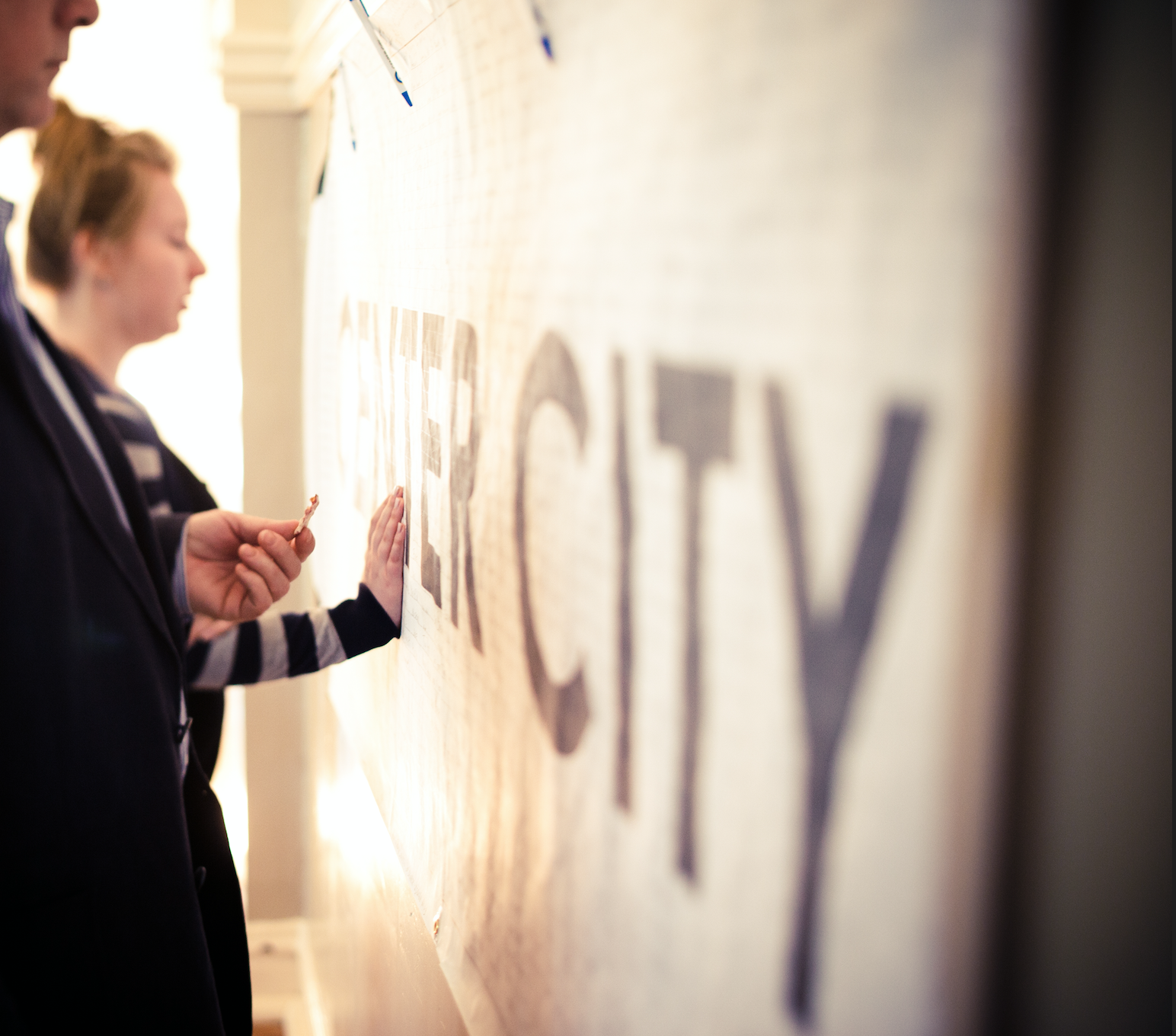
The next ten years would teach me so much about God’s grace, faithfulness, and care. My life would be forever changed in the course of the decade that followed, and I’m sitting in my home reflecting on an amazing ten years.
Countless lives impacted by the gospel, all four of our babies getting ten years older (and awesome-er), ten more years of marriage to my best friend, a masters degree, doctoral degree, and our sweet church family finding her footing in our community and bringing the life and light of Christ to so many folks. It also included a seismic shift in our family as we responded to the Lord’s call to move into a season of preaching, teaching, and writing full-time and transitioning the leadership of Center City Church to our dear friends, Jon and Jess Hernandez.
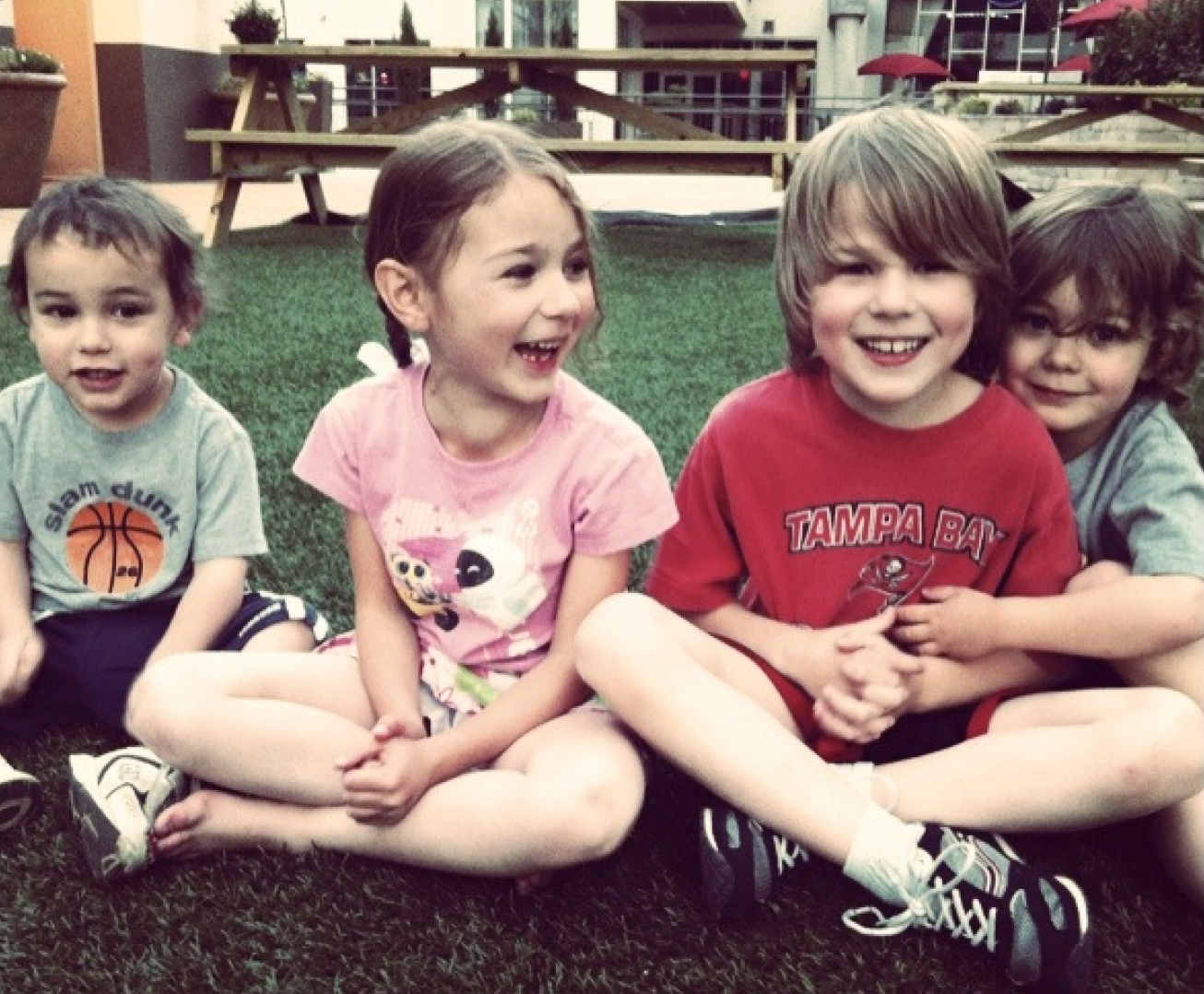
Here’s some questions I’m asking myself today as we are closing out a decade. I think that we can be so focused on the present day and the days to come that we forget to genuinely reflect on where God has taken us and his faithfulness along the journey. I hope that these questions help you to see the beauty and faithfulness of God in your life in the same way that I have seen him in my life.
In the last ten years…
- How would you describe your relationship with God?
- What bible verses have most impacted you?
- How did God show himself faithful to you?
- What books most impacted you?
- Was there a specific teaching (from your pastor or a speaker you heard) that impacted you?
- How old were you in 2010?
- Who were your closest friends in 2010?
- What new friends came into your life?
- Where did you live in the last ten years?
- What jobs did you hold?
- What were your educational highlights (school/degree programs, personal learning)?
- What major decisions did you make that significantly impacted your life?
- How is your health (weight, diet, medical) different from 2010?
- Name three mountaintop moments.
- Name three valley moments.
- What trips did you take that were highlights of this decade?
- What events (sports/concerts/fine arts, etc.) did you attend that were highlights?
- What did you start and finish?
- What did you start and not finish?
- What did you want to start, but never got around to it?
- Choose one word to describe the last ten years.
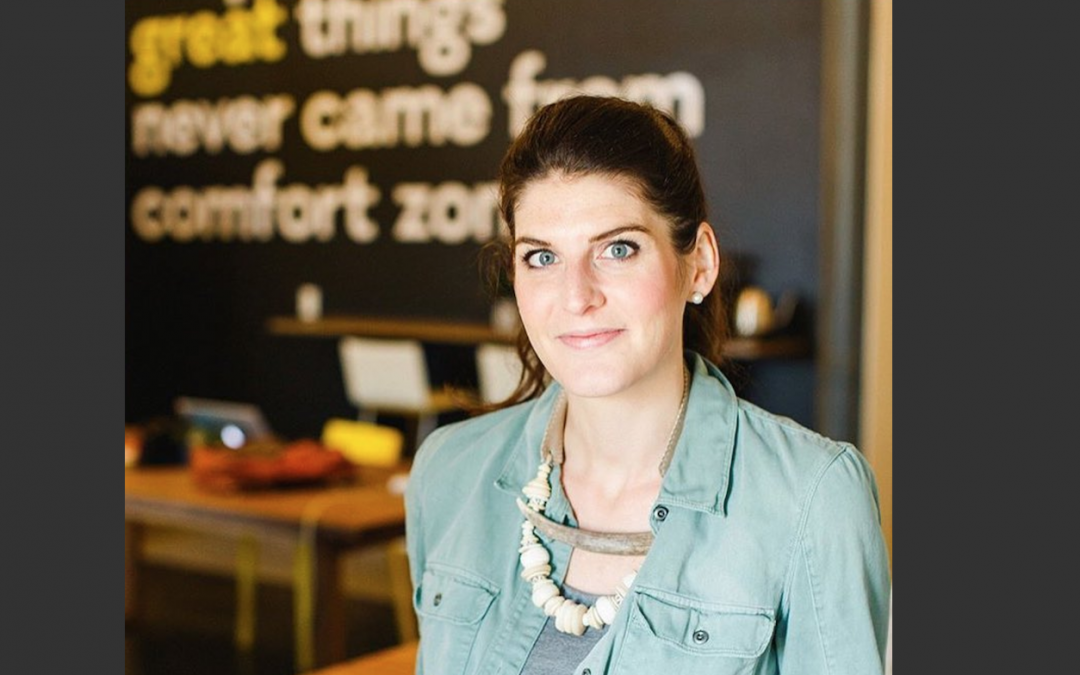
by David Docusen | December 9, 2019 | Uncategorized
I am thrilled to introduce you to Hannah Beavers. She is the Executive Director at Freedom Communities. I have the privilege of being on the board of this organization that works with neighbors in West Charlotte to achieve equitable access to education, housing, employment, and community wellness. This is accomplished by aligning partnerships, investments, and the community to create an environment where every family can thrive.
Hannah gives an inside look at what it’s like to lead a nonprofit organization that focuses on holistic strategies that take time to produce outcomes while living with the reality that major funders are looking for outcomes to support their desire to make an impact in the community.
This is a fascinating look at the tension between making a big impact as opposed to making a sustainable impact.
Thanks for this submission, Hannah. Keep up the great work!

—————————————-
In the world of non-profits – everyone talks about impact. We are constantly reporting to funders about our impact.
- How many people do you impact?
- How much does it cost for you to impact those people?
We are forced to treat people as numbers in the same way a corporation would view widgets produced and cost of goods sold. We hear of lofty corporate goals that from a marketing perspective sound compelling. “We’re going to impact 20 million people by 2020!” Everyone cheers and thinks that’s great – but when we do a bit more due diligence it gets a bit less impressive.
- What’s behind that impressive number of 20 million?
- Who are the humans behind the numbers and what did the impact actually look like on their lives?
- Did they attend a training?
- Did they receive a pencil, a book, a micro-loan, an education, a job – or all the above?
Despite the laser focus on impact in our industry, there is no impact measure for depth – no credit for re-impacting the same individual through continuous efforts to improve their lives. Accordingly, in the non-profit sector you cannot compare the impact of two organizations on an apple to apples basis.
Organization A vs. Organization B – An Impact Comparison
Organization “A” says they’re impacting 20 people by giving out flashlights.
Organization “B” says they’re impacting 20 people by providing training, a job, housing, and food.
Which group of 20 would you rather be in?
If given a choice between a flashlight or a job, training, housing, and food I would hands down pick the latter. This solution would help me become self-reliant, meaningfully contribute to society, and positively impact the economy. It is a solution that has the potential to create a ripple effect of opportunity. However, is the funding community willing to invest in holistic and complex solutions?
The unfortunate reality is that a solution giving out flashlights is much more scalable than a holistic solution. As a funder, I can get more bang for my buck by investing in Organization “A” vs Organization “B”. It’s simply cheaper and easier to impact 20 people by giving them flashlights. It’s a way easier story to tell.
And so the problem persists. Checks are written, thousands of people end up with flashlights and funders feel great about how many people they’ve impacted. Why wouldn’t they?
Deep or Wide Impact?
When non-profits or foundations orient their strategy to drive an increase in the number of people impacted they often do so at the expense of depth. At a surface level, larger numbers are simply more impressive. When we crack those numbers open and begin to ask about the humans behind the numbers – when we are willing to put ourselves in the shoes of those individuals – we might feel differently.
In some situations, you may argue that a simple solution may be the best one. People need flashlights and meals and organizations cannot be all things to all people. However, what happens when the batteries to my flashlight die and I cannot afford to buy new ones? What happens when tomorrow comes and I still need a meal? Are these solutions really solutions at all? Or are they perpetuating the problem that they sought to solve?
It is true that organizations shouldn’t have to be all things to all people. But in the world of social good, if we are serious about creating a lasting impact, we must build partnerships with organizations that fill a gap. We need to pursue partnerships that build depth and ensure that behind impressive numbers there is quality and sustainable work being accomplished.
Why Nonprofit Leaders are Forced to Hold Their Tongue
If we look at the root cause of any issue, it likely demands a holistic or systems approach. An approach that requires social service organizations, public, private, and faith communities to collaborate. Sadly, this is rare because of the broken system in which we have historically operated. We are competing for the same dollars from the same set of funders and operate from a scarcity mindset that prevents creativity and collaboration. We are afraid to take risks because if we decide to do things a bit differently and fail to hit a home-run, funders may not make another bet on us. The philanthropic community is incredibly risk averse.
This shift in the way things are funded will likely not be driven by the nonprofit community. Here’s why:
- Donor dollars are the lifeblood of nonprofit organizations.
- Funders require nonprofits to produce higher impact numbers to release future funding.
- Challenging funders is a huge risk to the livelihood of nonprofit organizations
As you can see, I would likely hold my tongue. Even if I believe that the current approach to drive impact could be a detriment to the quality of my work. Even if I believe that instead of funding programs, the greater need is funding staff to help expand programs and not the other way around.
Why hold my tongue? Because I know there’s another organization that will do what the funder is requesting. This puts me at risk of not being able to run my programs at all.
A New Path Forward
So how can we get funders to change their tune to promote collaboration, depth of impact, and solutions that attack issues at their root cause? I think we need to start with education about what true impact looks like, and extend a lot of grace. Funders, generally speaking, have their hearts in the right place. However, letting people off the hook at having their heart in the right place is what has gotten us where we are today. I started an organization that relied on traditional funding models. By the time I tried to overhaul our approach to create sustainability, the damage had already been done.
I see a huge opportunity to shift the way things are done in the philanthropic sector. This shift that could be a game changer for our future. However, we must be willing to start taking risks. Nonprofit leaders and funders have to be as serious about making an impact as we are about keeping on the lights for the organization.
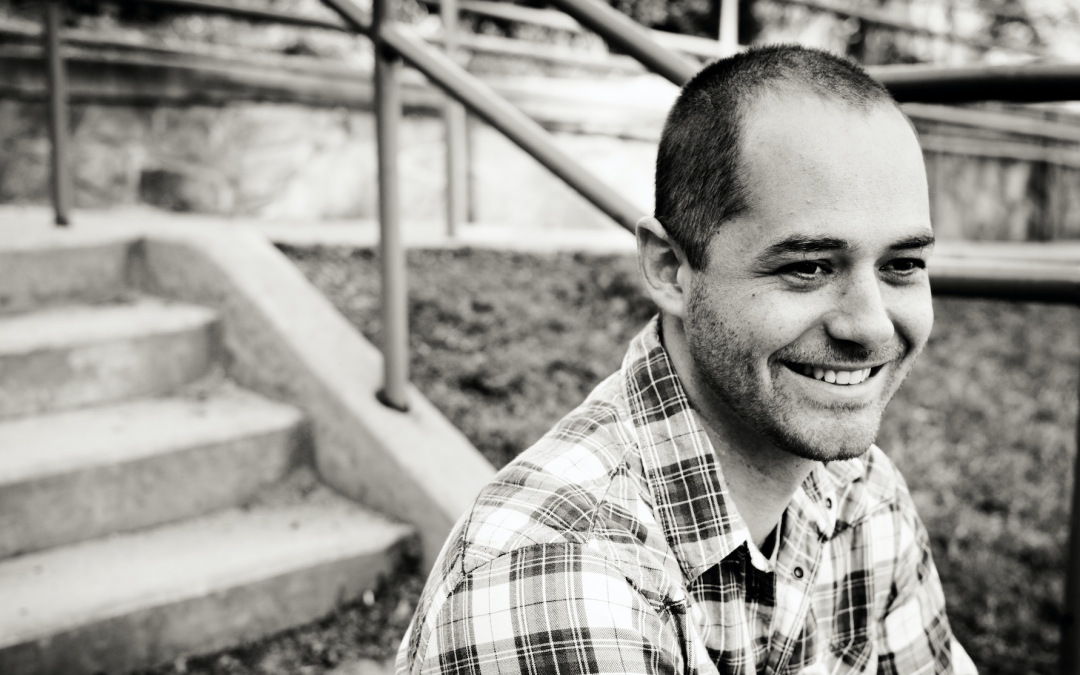
by David Docusen | December 6, 2019 | Uncategorized
Buddy the Elf and I have a lot in common, and I’m guessing it’s driving my literary agent nuts.
If you’ve never seen Will Ferrell’s Christmas movie, Elf, I need you to stop reading this and find your closest Blockbuster* and go rent it now. You won’t regret this decision.
One of my favorite scenes from Elf is when Buddy is talking to his dad and interrupting his work day. His father is obviously annoyed and Buddy isn’t picking up on the signals. The call is coming to a close and Buddy says, “I love you… I’ll call you in five minutes!”

In my defense, I am a first-time author that has had zero clue how the process works to write a book. I’ve been so grateful for the folks at the Fedd Agency and their brilliance along this process. However, I feel like I need to publicly show my gratitude to Esther (Literary Agent), Tori (my editor who I think is a savant), and Jill (Director of Author Relations) for their patience.
Here’s a quick peek at what it’s like to work with me:
- ME: “Hey Jill, I know we just submitted the book proposal today to a bunch of publishers. However, I’m not sure how this works. Should I expect to hear something by the end of today? A week from now? A few months from now?”
- JILL: “A few months.”
- ME: “Oh yeah totally cool… thanks.” *David emotionally tanks for a few moments*
- ME: “Hey Tori, what’d you think of the 27-page re-write I sent to you today?” *I imagine Tori receiving this text surrounded by one of the many manuscripts from legit New York Times Bestselling authors that the Fedd Agency represents*
- TORI: “Hey David, I got it and I am working through another project right now but I promise I’m on it!”
- ME: “Hey Esther, I was thinking about developing Neighborliness into a small group study and potentially a devotional. What do you think of adding this to the proposal?”
- ME: “Hey Esther, I just had an awesome meeting with some folks that are really excited about the release of the book. What do you think about adding this to our pitch?”
- ESTHER: *Two days later because she’s been traveling the world representing and negotiating contracts for aforementioned bestselling authors* “That sounds great!”
Buddy the Elf and I were probably a bit too excited to see the reality that there’s a lot going on in the world and it’s ok to take a deep breath and also let everyone else around us have enough space to breathe.
————————————————-
Esther submitted our proposal to publishers over two months ago. I’ve learned so much about myself during these two months. Namely, I’m still an unfinished product when it comes to patience. Maybe you are, as well. If we did a support group, I’m guessing we’d all get annoyed that it would take some time to pull everyone together.
This lifelong patience-lesson that God has been teaching me presented another learning moment yesterday. We had a pretty big meeting (of which none of us were involved) happen yesterday and I probably checked my phone no less than 150 times throughout the day. They had already told me not to expect to hear anything from them (the agency) or the publishing company, but in my little world of positive thinking I convinced myself that they are probably just like Apple.
Whenever I order something from Apple, they tell me it will be shipped within 3-5 business days and without fail it arrives within a day or two. I know they do this on purpose to make me happy, but it still works every time.
I am sure publishers are great and all, but turns out they weren’t like Apple. Yesterday came and went with no word, just like my agent told me to expect.
I did what any warm-blooded American would do and turned my attention to Google around 6pm.

Turns out there were 105,000,000 responses (literally), and a blog post from a guy that knows everything that happens when a proposal goes to a publisher. Probably should have Googled that four months ago and saved Esther, Jill, and Tori a lot of time.
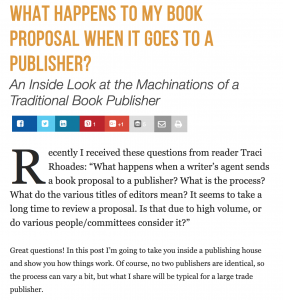
————————————————-
I had a realization today as I was praying about my struggle with impatience and inexperience. You have to understand before I spill the beans on this lesson that this is a dream that has been in my heart for over twenty years. I’ve wanted to publish a book – lots of books – ever since I started in full-time ministry.
It hit me yesterday, though, that I am absolutely ok if the answer is no.
Dara and I have been praying that God would open doors that no man can close and close doors that no man can open (Revelation 3:7). Throughout my insecurities, wrestling, doubts, and fears in this process, I find that even if I hear a no after working so hard and so long on this, I am absolutely certain that all is well and that the message will get to the right people at the right time. Additionally, I am convinced that God has the right partners lined up that will get behind this project to spread the word that he has placed in my heart.
————————————————-
You, Buddy the Elf, and I are probably a lot a like. None of us like to wait on things that we are excited to see come to pass. However, waiting cultivates faith and teaches us to embrace God in the waiting. I have also learned that God is teaching me that the fulfillment of my dream is not based on what I can do or what a publisher can do for me. This is God’s message, and he will bring it to pass in a way that he sees best.
- I’m ok with hearing no because I believe God is saying yes.
- I’m ok with hearing no because I know that God has a plan for my biggest dreams and desires.
- I’m ok with hearing no because I have learned that God’s plans are even more awesome than my biggest dreams and desires.
God is with us. He is with me as I wait for this process to unfold. He is with you as you wait on your dreams to come to pass. And he is with us during this season of Advent, as we willingly choose to imagine what it was like to wait on the arrival of Jesus to this world to show us how to love and live.
Immanuel, God is with us. Amen.
P.S. Let’s be honest… I still hope they say yes.
*Blockbuster doesn’t exist. Find a teenager to introduce you to Netflix.













